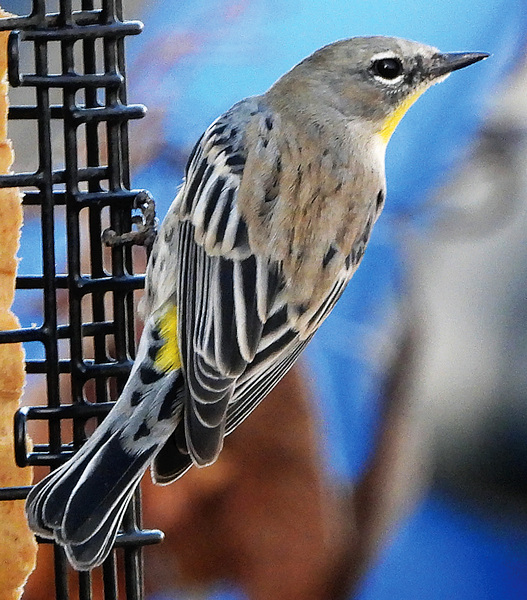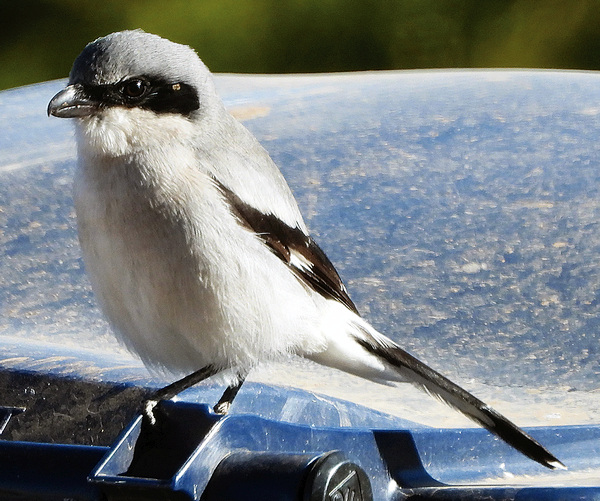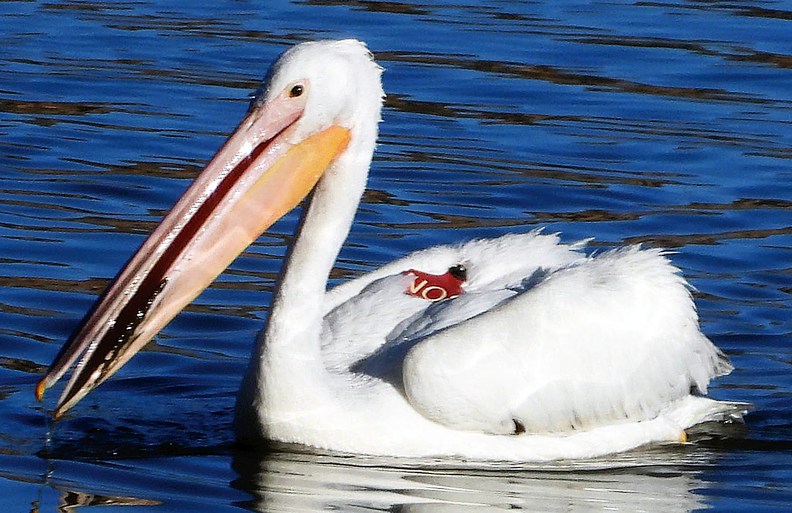By Heidi Dahms Foster
Not only will people who visit the Prescott Audubon Society’s new website see a whole new look, but they’ll see some new members with an updated focus.

A Sharp Shinned Hawk on a backyard birdbath
The entire Quad Cities and surrounding areas are a treasure trove of birding opportunities and include two of Arizona’s 28 designated Important Birding Areas. These are the Upper Verde River Wildlife Area, located approximately eight miles north of Chino Valley, consisting of 2145 acres located along the upper Verde River and lower Granite Creek; and the Watson and Willow Lakes Ecosystem, located within the city limits of Prescott.
This IBA occurs in two sections, Watson Lake east of Highway 89 and Willow Lake west of Highway 89, the immediate surrounding uplands, and two miles of Granite Creek flowing into Watson Lake. Prescott Audubon Society is the steward for this IBA.
Ryan Krouse has served on the board of the Prescott Audubon Society for the past five years. He has been a birder from a young age, growing up in Flagstaff. He moved to Prescott about 10 years ago, and his interest in birds has since become more than a hobby. He currently manages Jay’s Bird Barn in Prescott, where he can share his knowledge with a wide customer base.

It was through Jay’s owner Eric Moore that Krouse learned about the local Audubon Society. He began to attend meetings, and as he puts it “someone wrangled me onto the board!”
He said the board has seen a lot of turnover in the past five years, including, sadly, much of the “old guard.” However, new members have pitched in and are working to set up the organization for the next generation.
The Prescott Audubon Society primarily focuses on the hobby of birding, getting people birding, and fostering education, appreciation and curiosity about the nature in the greater Prescott area.
“We’re getting an influx of new people and we’re trying to educate them. With the growth we want to foster that appreciation as to what we have here, and that we want to maintain it,” Krouse said.
He acknowledges that growth in the area will most definitely continue, but he believes that doesn’t have to stand in the way of protecting what makes the greater Prescott area unique.

The area is interlaced and surrounded by the largest Ponderosa Pine Forest in the world, and boasts such treasures as the Willow and Watson Ecosystem, Goldwater, Granite Basin, Sullivan and Fain Lakes, Granite and Lynx Creeks, the Thumb Butte and Mingus Mountain areas, and the Upper Verde ecosystem, among others. This allows for an amazing array of birding habitats, and lakes provide some wonderful surprises during migration season. Backyard birding is successful in most areas, with the right habitat, and it’s easy to get hooked on the hobby.
“We have so much nature and natural habitat interlaced throughout the just the City of Prescott. You don’t have to go far to see birds. Some of the best birding is in parking lots!” Krouse said.
“There is great birding in Arizona in general. Within an hour of my house in downtown Prescott I can be in five to six distinct habitats, and in a couple hours, in the low desert. Lake areas have deciduous trees, riparian areas, grassland, and high desert. It’s all there with subsets of birds in the same spot, often separated by just a trail.”
And speaking of nearby habitat, residents can learn about how to create a great habitat in their yards, attracting a wide variety of birds. Local businesses such as Jay’s Bird Barn and several area nurseries can offer great advice on how to create a habitat.

Generally, a good backyard habitat requires sheltering trees and shrubs, a water source, and good seeds and suet without waste filler. Krouse said native, drought tolerant plants in the landscape will help to protect water sources and attract local birds.
Prescott Audubon has an amazing array of activities and information to offer, although some gatherings are a bit limited currently due to ongoing COVID concerns.
“As we emerge from COVID (we’ll have more activities). In the past we had a Window on Nature event monthly where we have an outside speaker on a multitude of nature topics – my dad did one on fire science ecology, and a friend did one on bird photography. We cover a lot of topics. We have been talking about getting those fired up again in the evenings, but we haven’t set a date yet,” Krouse said.
The Prescott organization is still doing monthly bird walks throughout the area. Krouse said there is no better way to foster appreciation of birds than getting out and seeing them.
“A bird walk is different than hiking,” Krouse said. “You can spend four hours and not go a quarter mile. It’s leisurely, relaxing and quiet. A knowledgeable leader heads up the walk, and the birders follow. We find birds, talk about them and answer questions.”
It’s always good to bring comfortable shoes, and dress appropriately for the weather. Snacks and water for several hours, and a pair of binoculars are necessary.
If a walk is more difficult, or requires more technical skill, the leader will know, so it’s always good to ask in advance about accessibility.
When COVID allows, the Society plans to kick off regular activities again such as participation in Prescott’s Earth Day and others.
Krouse said children’s activities are important. “If the kids are introduced early, you don’t have to teach them to appreciate nature. They love it, it’s a natural fascination with most kids that I don’t see in adults.”

The Prescott Audubon Society website at prescottaudubon.org, which is currently in the process of being updated, still contains a reservoir of information and photos, including articles written by Krouse in the “5enses Magazine.”
A collection of archived articles offers more information on birding and conservation topics. The site also features local bird photos, information about where to find local birds, and membership information.
Contact the Prescott Audubon Society at 928-300-9075 or email contact@prescottaudubon.org.

